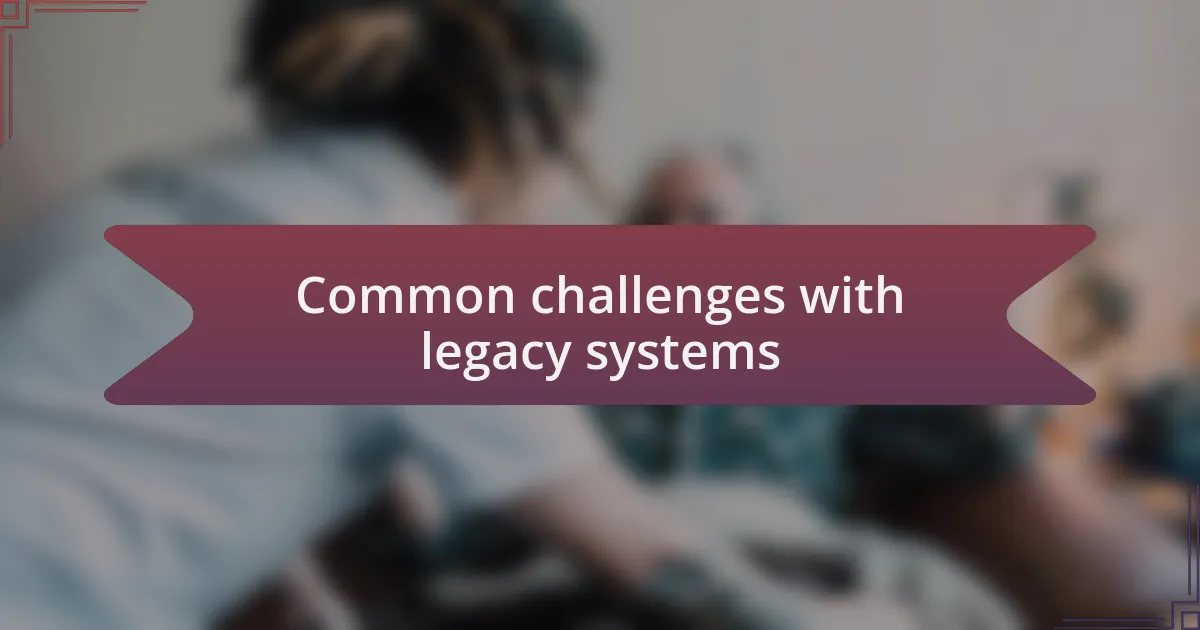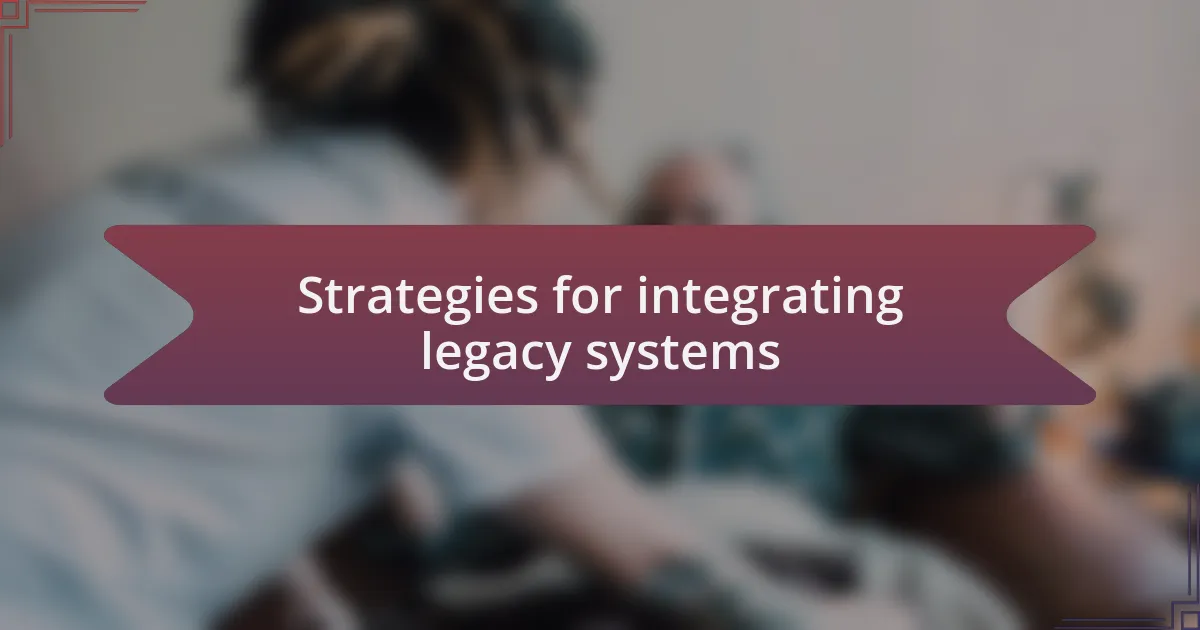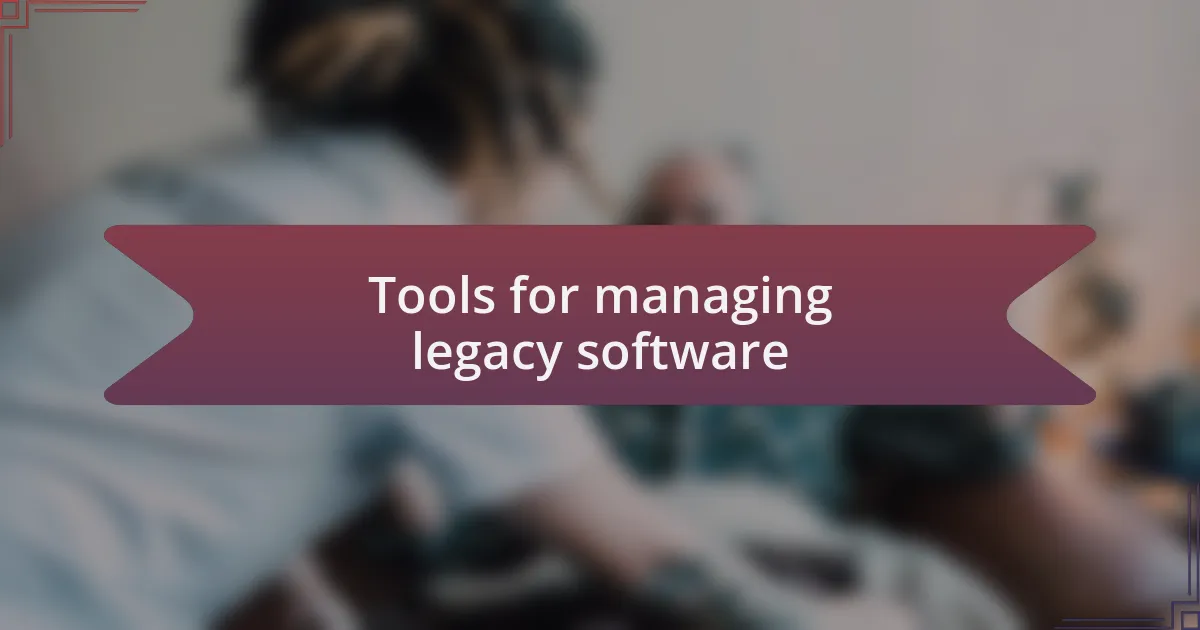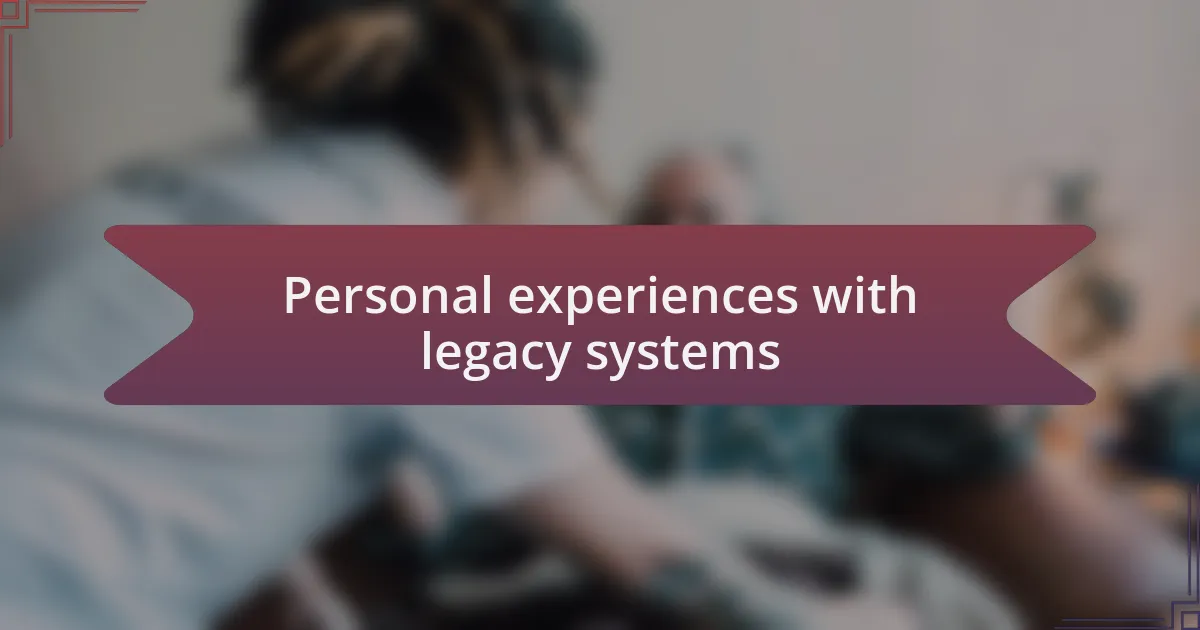Key takeaways:
- The lack of documentation in legacy systems often complicates understanding and modifications.
- Gradual refactoring of code and developing APIs can facilitate better integration of legacy systems with modern applications.
- Utilizing version control and dependency management tools is crucial for managing older software effectively.
- Legacy systems can serve as valuable learning opportunities, fostering teamwork and resilience among developers.

Common challenges with legacy systems
Legacy systems present a unique set of challenges that can feel overwhelming. I remember the first time I inherited a giant monolith app, riddled with technical debt and outdated practices. It was disheartening to see how these systems stifled innovation and made every minor change feel like an uphill battle.
One of the most significant hurdles I faced was the lack of documentation. Often, vital information about the system’s functionality was trapped in someone’s memory or scattered across various platforms. Have you ever dealt with a situation where you had to guess the rationale behind a specific line of code? It can be frustrating and demoralizing, but it’s an all-too-common reality with legacy systems.
Additionally, integrating modern tools and processes with outdated technologies is another considerable challenge. I struggled with trying to implement CI/CD pipelines only to find that the legacy system posed compatibility issues. This experience really highlighted how critical it is to address these challenges proactively; without doing so, the path to digital transformation can feel like trying to fit a square peg into a round hole.

Strategies for integrating legacy systems
To effectively integrate legacy systems, one strategy I found crucial is the gradual refactoring of the codebase. Instead of attempting a complete overhaul, I focused on identifying small sections of the code that could be updated incrementally. This approach not only mitigated risks but also allowed my team to maintain functionality while gradually modernizing the architecture. Have you ever felt the weight of changing an entire system at once? Breaking it down is often much easier and less daunting.
Another technique I’ve implemented is the development of APIs to bridge legacy systems with modern applications. By creating interfaces that allow different systems to communicate, I was able to leverage existing functionalities without rewriting everything from scratch. This was particularly rewarding; it felt like giving new life to an old system. I still remember the moment we successfully connected a modern dashboard to our aging database, unlocking valuable insights almost seamlessly.
Lastly, fostering a culture of collaboration between teams is essential when dealing with legacy systems. When I worked on a project that involved both legacy and new technologies, it was the open dialogue between the developers and operations teams that led to innovative solutions. Reflecting back, it struck me how vital it was to pool our knowledge and experience—after all, who better to understand the quirks of the legacy systems than those who worked on them firsthand? Encouraging this kind of teamwork can make a world of difference.

Tools for managing legacy software
When it comes to tools for managing legacy software, I’ve found that version control systems are indispensable. They provide a safety net for your code, which is especially comforting when diving into older systems. There was a time when our team faced a critical bug in a legacy module, and having that version history saved us—especially when I was able to quickly roll back changes without losing time or confidence.
Another tool that proved invaluable during my journey with legacy systems is dependency management software. I remember grappling with outdated libraries that threatened to destabilize our application. By using tools like Maven or npm, I could manage different versions efficiently and ensure that our legacy code remained compatible with any new updates. It was a bit like navigating a ship through turbulent waters—having the right tools makes the journey much smoother.
Lastly, I frequently leaned on monitoring tools for tracking the performance of legacy applications. Understanding usage patterns and performance metrics helped us identify which components were faltering under pressure. It was a revelation to witness how these insights allowed us to preemptively address issues, and I often wondered: how did we ever manage without them? By keeping a close eye on performance, I felt much more equipped to handle any surprises that might arise.

Personal experiences with legacy systems
Navigating legacy systems has often felt like delving into a time capsule. I distinctly remember a project where I encountered a 15-year-old application that had been patched more times than I could count. The initial feeling of dread quickly turned into a resolved curiosity. As I dug into the code, I found snippets of brilliance and some baffling decisions. It was a humbling experience that made me appreciate the skills of those who came before me, even if their choices seemed questionable at first glance.
During one particularly intense sprint, we discovered that a legacy component was not only outdated but critical for our current operations. The anxiety was palpable; what do you do when the foundation starts to crumble? I rallied my team, and together, we devised a plan that involved carefully isolating the component while we rebuilt it from the ground up. It was stressful, yet exhilarating—like performing surgery on a live patient. The camaraderie that formed during that time highlighted the importance of teamwork when dealing with such intricate challenges.
There was a moment of clarity when I realized that legacy systems are not just burdens but also learning opportunities. We organized a retrospective after successfully updating one of our oldest applications. As we shared our experiences, it became clear that each challenge had taught us something unique. I often ponder how these experiences shape us as developers; they build resilience and foster adaptability. In those moments, I truly understood that legacy systems, while daunting, have a way of revealing our potential.